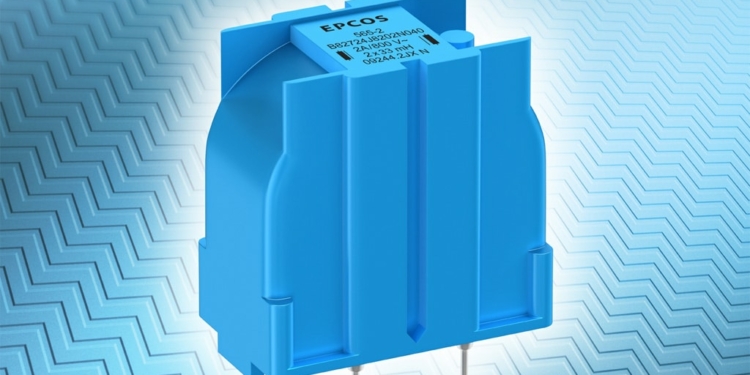Source: TDK news
TDK Corporation (TSE:6762) presents a new series of EPCOS current-compensated ring core power line double chokes.
The RoHS-compatible B82724J8*N040 series features a high rated voltage of 800 V DC or 250 V AC in continuous operation and was developed specifically for use as DC link chokes in frequency converters. A further advantage of the new series is its outstanding thermal behavior in comparison with conventional types, which means that chokes with high inductance values can be operated with high currents, even at a high operating temperature.
The new chokes offer a range of inductance values extending from 0.5 mH to 47 mH and rated currents of between 1.6 A and 10 A, depending on the inductance. Their rated ambient temperature without derating is +70 °C. For the additional attenuation of symmetrical interferences the power line chokes feature a stray inductance of around 0.5 percent of the rated value. The dimensions for all types are 18.5 mm x 31.3 mm x 33.2 mm, just like the standard B82724J* series. This means that the new chokes can be designed into existing layouts.
The new ring core chokes are manufactured using a flame retardant plastic that is compliant with UL 94 V-0 and certified in accordance with IEC 60335-1, Clause 30 (glow-wire and ball pressure test). In addition, the winding is completely potted, which allows its use in highly polluted environments. Typical applications include frequency converters and power supplies.
Main applications
- Frequency converters and power supplies
Main features and benefits
- High rated voltage of 800 V DC for use as DC link chokes
- High inductance values and high rated currents at a high operating temperature































